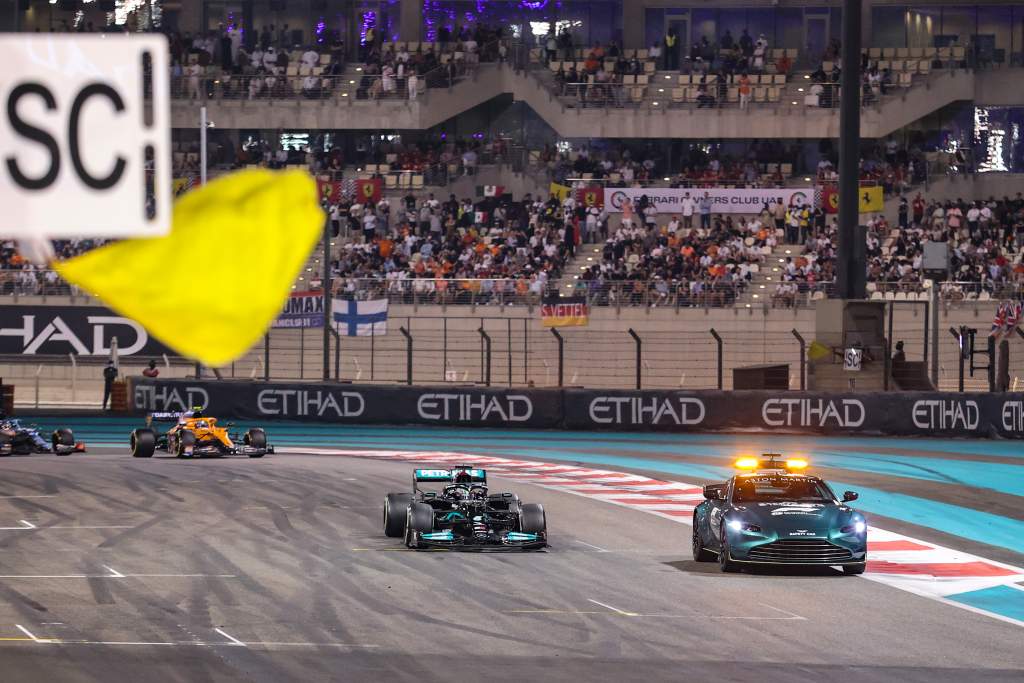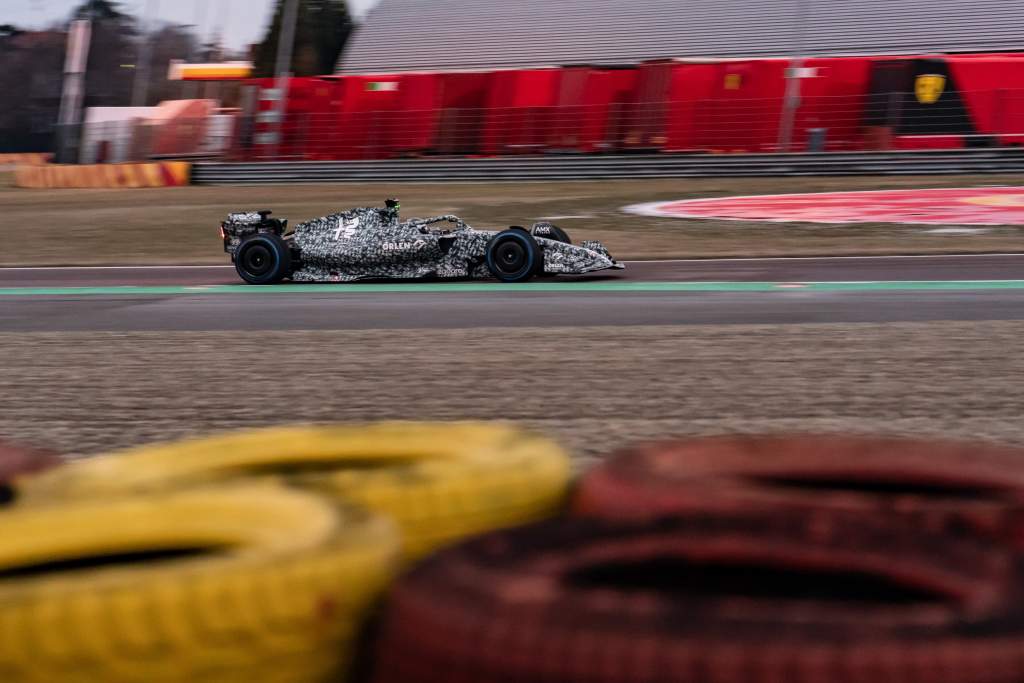Up Next

An expedited safety car restart process and the elimination of the long-established starting tyre rule are among the changes revealed in newly-published versions of Formula 1’s sporting regulations.
Under the rewritten rules governing safety car restarts, the safety car will return to the pits at the end of the following lap after the message ‘lapped cars may now overtake’ is sent by race control.
Previously this only happened once the last lapped car had passed the leader. In races where multiple cars need to unlap themselves, this could sometimes take long enough that the entire process lasted an extra lap longer.

It comes after the controversial 2021 Abu Dhabi Grand Prix in which a desire to hasten the end of a late safety car period prompted race director Michael Masi to overrule the process outlined in the regulations and fast-track the process in a bid to get one lap of green flag racing in.
Masi’s decisions did not relate to this specific part of the safety car process, though.
So there will likely be further changes to the regulations as this revision has already been confirmed, whereas FIA president Mohammed Ben Sulayem said on Thursday that unlapping procedures will be reassessed and presented to the next F1 Commission before the start of the 2022 season.
This is just one of several changes outlined the new sporting regulations published on Friday.
F1 has had a rule since 2014 that required the 10 drivers who make it through to the final part of qualifying to start on the tyre they used to set their fastest time in Q2.
But the top teams have tended to have such a pace advantage that they have been able to progress through Q2 on medium compounds, giving them the optimal starting tyre anyway – while those in the lower part of the top 10 would suffer because they do need softs to get to Q3.

Despite the rule being missing from several iterations of the 2022 sporting regulations, it was still considered by the FIA to be ‘unchanged’ as recently as last December.
That indicated it was possible the rule could be added back into the regulations by the time the 2022 season started.
However, several teams did not want the rule in place and both F1 and the FIA had admitted there is an argument for the rule being dropped.
And it remains ‘struck off’ in the latest edition of the sporting regulations, which are set to be the rules in place for the start of the season – so it can be taken as read that it is officially abandoned.
Other amendments include the prescription for two Friday practice sessions to be conducted by rookie drivers during the season, and a change to end-of-season and 2023 pre-season testing plans.
There will only be a one-day test after Abu Dhabi, in which teams must run two cars: one driven by a 2022 race driver, for tyre testing, and one for a rookie with no more than two career grand prix starts.
For now, the plan appears to be for pre-season testing to return to just one three-day test in 2023.
That was the duration of pre-season testing last year, but F1 has returned to a pair of three-day tests in 2022 to give teams more time to prepare with cars built to brand-new technical regulations.

Another testing-related tweak is that the rules governing the testing of previous cars has been amended so that 2021 cars can be used in private test sessions this season.
In the past, cars had to be at least two years old, but this is unnecessary for 2022 because last year’s designs are rendered obsolete thanks to the new rules.
Next year, though, the rule will return to stipulating cars that are two years old – so even in 2023, the ‘newest’ car that can be tested outside of official sessions will still be a 2021 design.
It means current generation cars will only count as ‘previous cars’ in 2024, when 2022 designs will be eligible.




